How to Paint Like The Old Masters
Are you ready to dive into the world of timeless artistry? Painting like the Old Masters is not just about replicating their techniques; it's about understanding their philosophies, embracing their materials, and channeling their creativity. Imagine standing in front of a canvas, brush in hand, feeling the weight of history and the whispers of genius guiding your strokes. This article explores techniques, materials, and philosophies that define the painting styles of the Old Masters, providing insights into how to emulate their timeless artistry.
The term "Old Masters" refers to a group of European artists who flourished from the 14th to the 18th centuries, including iconic figures such as Leonardo da Vinci, Michelangelo, Rembrandt, and Vermeer. These artists revolutionized the art world with their innovative techniques and profound understanding of light, shadow, and human emotion. Their contributions laid the groundwork for modern painting, influencing countless artists and movements that followed. The Old Masters didn’t just create art; they crafted narratives, evoked emotions, and explored the human condition, leaving a legacy that continues to inspire.
To paint like the Old Masters, one must first understand the materials they used. The right tools can make a world of difference in achieving that rich, textured look synonymous with classical art. Old Masters predominantly favored oil paints, which allowed for greater flexibility and depth in their work. But it’s not just about the paint; the brushes and canvases they chose played a pivotal role in their artistic expression. Let’s delve deeper into these essentials.
Oil paints were a favorite among Old Masters for their versatility and rich pigmentation. Unlike watercolors, oils dry slowly, giving artists ample time to blend colors and adjust their work. This quality is essential for techniques like glazing, where layers of transparent paint create depth and luminosity. When selecting oil paints, consider quality over quantity. Look for brands that offer a wide range of pigments and have a reputation for consistency. Here’s a quick comparison of popular oil paint brands:
| Brand | Quality | Price Range |
|---|---|---|
| Winsor & Newton | High | $$$ |
| Gamblin | High | $$$ |
| Van Gogh | Medium | $$ |
| Grumbacher | Medium | $ |
The type of brush can significantly affect your painting techniques. Old Masters often used a variety of brushes, each serving a specific purpose. For instance, bristle brushes were great for thick applications of paint, while sable brushes were preferred for fine details. When selecting brushes, consider their shape, size, and material. A good set of brushes can elevate your painting game, allowing for precision and control in your artwork.
Understanding the right canvas or surface can enhance your painting experience. Old Masters often used linen or cotton canvases, primed to create a smooth surface for oil painting. The texture of the canvas can influence the final look of your artwork. A rough surface can add texture, while a smooth surface allows for fine detail work. Experiment with different surfaces to find what best suits your style and technique.
Now that you’re armed with the right materials, let’s explore some of the distinctive techniques employed by the Old Masters. Techniques like glazing and chiaroscuro were essential in creating depth and drama in their work. Glazing involves applying thin, transparent layers of paint to build up color and luminosity, while chiaroscuro refers to the strong contrasts between light and shadow. By mastering these techniques, you can bring a new dimension to your paintings, captivating viewers with the richness of your work.
Color theory played a crucial role in the works of Old Masters. They understood how colors interact and how to create harmony in their palettes. By grasping the basics of color mixing, you can achieve rich, dynamic compositions. Old Masters often used a limited palette, focusing on a few key colors to create depth and richness in their paintings. This approach not only simplifies the process but also enhances the overall cohesion of the artwork.
Using a limited palette can lead to cohesive artwork. Old Masters utilized fewer colors to create depth and richness in their paintings. For example, a palette consisting of ultramarine blue, cadmium red, yellow ochre, and titanium white can produce a wide range of hues and tones. This technique encourages creativity and forces you to think critically about color relationships.
Color temperature affects the mood of a painting. Old Masters manipulated warm and cool colors to enhance their compositions. Warm colors like reds and yellows tend to advance, creating a sense of closeness, while cool colors like blues and greens recede, giving a feeling of distance. By understanding how to use color temperature effectively, you can evoke emotions and guide the viewer’s eye throughout your artwork.
Finally, let’s talk about composition and design principles. The Old Masters were masters of structure, often employing techniques like the Rule of Thirds to create balanced and engaging compositions. This rule involves dividing your canvas into thirds both horizontally and vertically, placing focal points along these lines to draw the viewer’s eye. Establishing focal points is essential in guiding the viewer's gaze and creating a narrative within your artwork.
The Rule of Thirds is a classic compositional technique that helps create balance in your artwork. Old Masters applied this rule masterfully, ensuring that their compositions were both harmonious and engaging. By positioning key elements along these imaginary lines, you can create a sense of movement and intrigue, drawing the viewer into your painting.
Establishing focal points is essential in guiding the viewer's eye. Old Masters used techniques like contrasting colors, sharp details, or dramatic lighting to create effective focal points in their artworks. By directing attention to specific areas of your painting, you can tell a story and evoke emotions, making your artwork more impactful.
Q: Do I need expensive materials to paint like the Old Masters?
A: While quality materials can enhance your work, creativity and technique are more important. Start with what you can afford and gradually invest in better materials as you improve.
Q: How long does it take to master these techniques?
A: Mastery takes time and practice. Be patient with yourself and enjoy the learning process. Regular practice will yield significant improvements over time.
Q: Can I use these techniques in modern painting styles?
A: Absolutely! Many contemporary artists incorporate Old Masters techniques into their work, blending traditional methods with modern styles for unique results.
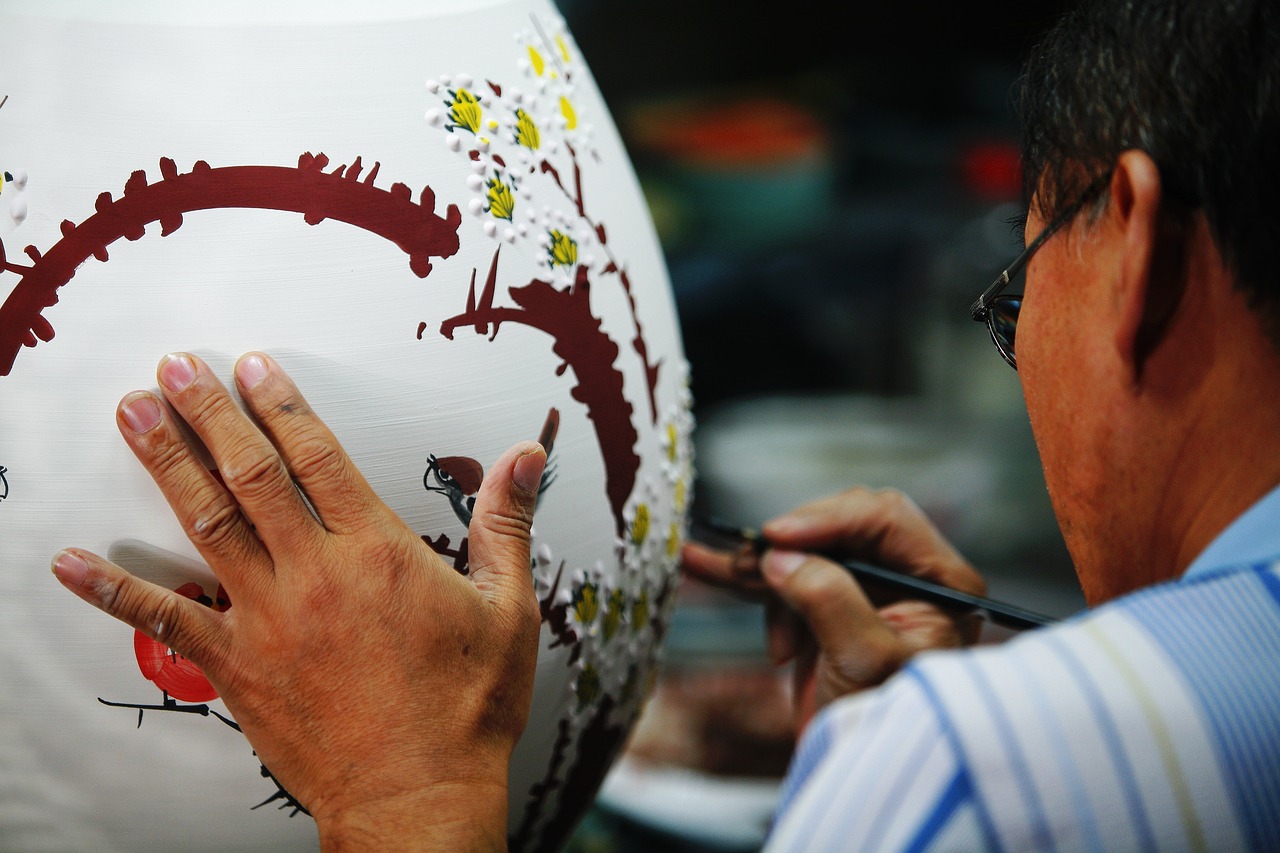
Understanding the Old Masters
The term Old Masters refers to a group of highly skilled artists who flourished in Europe from the 14th to the 18th century. These painters, such as Leonardo da Vinci, Michelangelo, Rembrandt, and Caravaggio, created works that not only showcased their incredible talent but also laid the groundwork for modern art. Each of these artists contributed unique techniques and philosophies that continue to influence artists today. For instance, da Vinci’s meticulous attention to detail and use of sfumato—a technique that creates a soft transition between colors—has captivated audiences for centuries.
One of the most remarkable aspects of the Old Masters is their ability to convey emotion through their art. By studying their work, we can see how they manipulated light and shadow, employed vibrant colors, and composed their pieces to evoke specific feelings. For example, Rembrandt’s use of chiaroscuro—contrasting light and dark—creates a dramatic tension that draws viewers into the story of the painting. This technique not only adds depth but also emphasizes the emotional weight of the subjects portrayed.
Moreover, the Old Masters were not just artists; they were also philosophers and scientists. They approached painting as a discipline that required a deep understanding of the world around them. This intellectual curiosity led to innovations in perspective and anatomy, allowing them to create lifelike figures and dynamic compositions. Their works often reflect a profound understanding of human nature, society, and the environment, making them timeless pieces that resonate with audiences even today.
To truly appreciate the Old Masters, one must consider the historical context in which they worked. The Renaissance, for example, was a time of great cultural rebirth, where art, science, and philosophy flourished. Artists were often commissioned by wealthy patrons, which allowed them to experiment with new techniques and materials. This patronage system not only helped artists thrive but also ensured that their works would be preserved for future generations. Today, many of these masterpieces can be found in prestigious museums around the world, where they continue to inspire and educate aspiring artists.
In summary, understanding the Old Masters involves recognizing their contributions to the art world, their innovative techniques, and the cultural context of their time. By studying their work, modern artists can gain invaluable insights into the principles of composition, color theory, and emotional expression. So, whether you are a budding artist or a seasoned professional, delving into the techniques of the Old Masters can significantly enhance your artistic journey.
- Who are considered the Old Masters? The Old Masters typically include artists like Leonardo da Vinci, Michelangelo, Rembrandt, and Caravaggio, among others.
- What techniques did the Old Masters use? They employed various techniques such as chiaroscuro, sfumato, and glazing to create depth and emotion in their paintings.
- Why are the Old Masters important to modern art? Their innovative techniques and philosophies laid the groundwork for modern artistic practices and continue to influence artists today.

Essential Materials for Masterful Painting
When it comes to emulating the artistry of the Old Masters, the right materials can make all the difference. Just like a chef needs quality ingredients to whip up a gourmet meal, an artist must equip themselves with the best tools available. The Old Masters, renowned for their breathtaking works, had a specific set of materials that contributed significantly to their masterpieces. Understanding these materials not only enhances your painting experience but also elevates the quality of your artwork. So, what exactly did these legendary artists use, and how can you incorporate them into your own practice?
First and foremost, the choice of paint is crucial. The Old Masters predominantly used oil paints, which provided them with a richness and depth that other mediums simply couldn't match. These paints allowed for excellent blending and glazing techniques, which are essential for achieving the nuanced effects that characterize their work. The texture and vibrancy of oil paints can bring a painting to life, making it essential for any aspiring artist to invest in quality brands. But how do you choose the right oil paints? Look for brands that offer a wide range of pigments and high pigment load, as this will give you more flexibility and control in your color mixing.
Next, let’s talk about brushes. The Old Masters employed a variety of brushes, each designed for specific techniques and effects. A well-rounded artist’s toolkit should include:
- Filbert Brushes - Great for blending and creating soft edges.
- Round Brushes - Perfect for detail work and fine lines.
- Flat Brushes - Excellent for bold strokes and washes.
Each brush type serves a distinct purpose, and understanding how to use them effectively can significantly enhance your painting skills. Moreover, the quality of the brushes matters; investing in brushes made from natural hair can offer better paint retention and smoother application.
Another essential aspect of the Old Masters' toolkit is the choice of canvas or surface. The texture and absorbency of the canvas can influence the overall outcome of your painting. The Old Masters often used linen canvases, which are durable and provide a beautiful surface for oil paints. Additionally, they sometimes opted for wooden panels, which offer a different texture and can add a unique character to the artwork. When selecting your canvas, consider the following:
- Weight and Texture - Heavier canvases can withstand the application of multiple layers of paint.
- Priming - Ensure that your canvas is properly primed to prevent the oil from seeping through and damaging the fibers.
By carefully selecting your canvas or surface, you can create a solid foundation for your artistic expression.
To sum it all up, the materials you choose play a pivotal role in your painting journey. With the right oil paints, brushes, and surfaces, you can channel the spirit of the Old Masters in your own work. Remember, it's not just about the tools; it's about how you use them. Practice with these materials, experiment with different techniques, and allow your creativity to flourish. As you delve deeper into the world of painting, you'll find that these essential materials are not just tools but extensions of your artistic vision.
Q: What is the best type of oil paint for beginners?
A: For beginners, it's advisable to start with student-grade oil paints from reputable brands. They offer good quality at a more affordable price, allowing you to practice without breaking the bank.
Q: How do I properly clean my brushes after painting?
A: After painting, use a solvent like turpentine or mineral spirits to clean your brushes. Follow up with warm, soapy water to remove any remaining paint and ensure the longevity of your brushes.
Q: Can I use acrylic paints instead of oil paints?
A: While acrylic paints can be used, they behave differently than oil paints. If you're aiming to replicate the techniques of the Old Masters, it's best to stick with oils for their blending and glazing capabilities.

The Importance of Oil Paints
When it comes to the world of painting, oil paints stand out as a favorite among the Old Masters for good reason. These versatile paints have been the backbone of many iconic artworks, allowing artists to explore a range of techniques and styles that are simply unattainable with other mediums. One of the most significant advantages of oil paints is their blendability. Unlike acrylics or watercolors, oils remain workable for extended periods, enabling artists to create smooth transitions and intricate details. Imagine trying to blend colors quickly before they dry—oil paints give you the luxury of time.
Moreover, oil paints offer a rich depth of color that can transform a simple canvas into a breathtaking masterpiece. The pigments used in oil paints are vibrant and can produce stunningly luminous effects. This is largely due to the way oil paints interact with light; they have a unique ability to reflect and refract light, which adds a dimension of realism and beauty to the artwork. The Old Masters understood this, using layers of oil paints to build up colors and achieve a sense of depth that captivates viewers even centuries later.
In addition to their aesthetic benefits, oil paints also provide a level of flexibility that is crucial for artistic expression. Artists can manipulate the paint in various ways—thinning it for glazing techniques or applying it thickly for impasto effects. This adaptability allows for a wide range of textures and finishes, making oil paints suitable for everything from delicate portraits to bold landscapes. For those looking to emulate the Old Masters, understanding how to use oil paints effectively is essential.
When selecting oil paints, quality matters. Here’s a quick overview of what to look for:
| Feature | Importance |
|---|---|
| Pigment Quality | Higher-quality pigments provide better color saturation and longevity. |
| Consistency | A good oil paint should have a smooth consistency for easy application. |
| Lightfastness | Choose paints that resist fading over time to ensure your artwork lasts. |
In conclusion, oil paints are not just a medium; they are a gateway to exploring the depths of artistic expression. By mastering the use of oil paints, aspiring artists can unlock the secrets of the Old Masters, creating works that resonate with the same timeless beauty. So, if you're ready to dive into the world of oil painting, remember to choose your materials wisely, and don’t hesitate to experiment with this magnificent medium!
Q: Why do Old Masters prefer oil paints over other mediums?
A: Old Masters favored oil paints for their versatility, blendability, and rich depth of color, which allowed for a wide range of artistic techniques.
Q: How long do oil paints take to dry?
A: Oil paints can take anywhere from a few days to several months to dry, depending on the thickness of the application and environmental conditions.
Q: Can I mix oil paints with other mediums?
A: While it's possible to mix oil paints with other mediums, it’s important to understand how they interact. For best results, stick to compatible mediums.
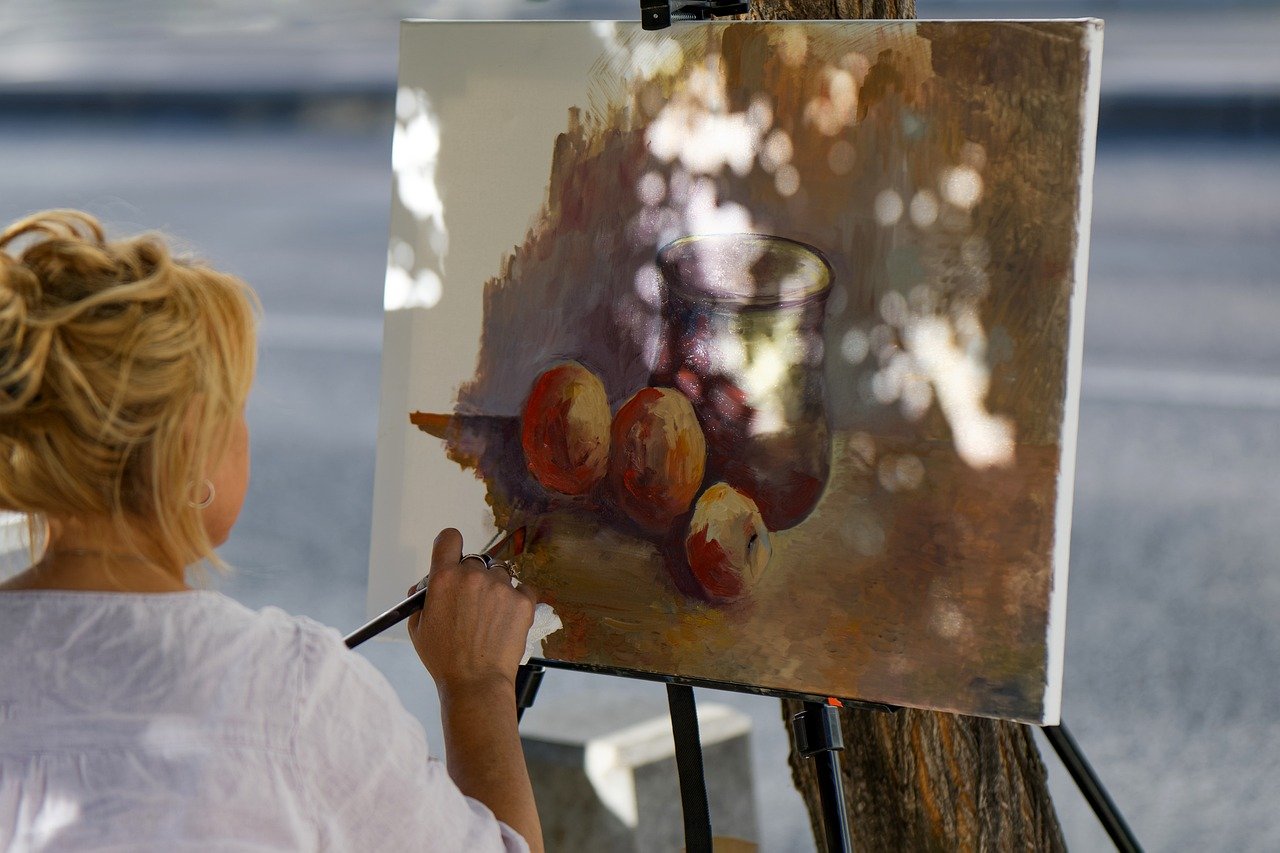
Choosing the Right Brushes
When it comes to painting like the Old Masters, selecting the right brushes is akin to a chef choosing the perfect knife. The type of brush you use can dramatically influence your painting techniques and the overall outcome of your artwork. Old Masters had their favorites, and understanding why can help you elevate your own painting skills. So, what should you look for when choosing brushes?
First and foremost, consider the type of bristles. Brushes typically come in two varieties: natural and synthetic. Natural bristle brushes, often made from animal hair such as sable or hog, offer superior paint-holding capacity and a softness that allows for smooth application. They are particularly favored for oil painting, as they can create delicate strokes and blends that are characteristic of the Old Masters' works. On the other hand, synthetic brushes are more durable and can be easier to clean, making them a practical choice for beginners or those working with acrylics.
Next, you’ll want to think about the shape of the brush. Different shapes serve different purposes:
- Flat Brushes: Ideal for broad strokes and filling in larger areas.
- Round Brushes: Perfect for detail work and fine lines.
- Filbert Brushes: A hybrid shape that combines the qualities of flat and round brushes, great for blending.
- Fan Brushes: Excellent for texture and creating foliage effects.
Moreover, the size of the brush matters as well. Smaller brushes allow for intricate details, while larger brushes can cover more area quickly. The Old Masters often used a range of brush sizes to achieve their stunning effects, so it's wise to invest in a variety. Remember, a well-rounded brush collection can be your best ally in creating depth and detail in your paintings.
Another factor to consider is the quality of the brush. High-quality brushes may come with a higher price tag, but they are worth the investment. They maintain their shape better, hold more paint, and provide a smoother application. Look for brushes with secure ferrules (the metal part that holds the bristles) and resilient bristles that bounce back after use. It can be helpful to read reviews or consult fellow artists to find reputable brands that align with your needs.
Finally, don’t forget about the care and maintenance of your brushes. Just like any tool, a brush requires proper care to ensure longevity. Clean your brushes thoroughly after each use, reshaping the bristles to their original form. This will keep them in prime condition and ready for your next masterpiece. You might even find that taking care of your brushes can be a meditative part of the painting process!
In conclusion, choosing the right brushes is not just about picking the most expensive ones or the prettiest shapes. It’s about understanding how each type can aid your artistic expression. By selecting the right combination of bristles, shapes, sizes, and quality, you can channel the spirit of the Old Masters and bring your own artistic vision to life.
Q: What type of brush is best for beginners?
A: For beginners, a set that includes a mix of round and flat brushes in various sizes is ideal. Synthetic brushes can also be a good choice due to their durability and ease of cleaning.
Q: How do I clean my brushes properly?
A: To clean brushes, rinse them in warm water immediately after use, then use mild soap to remove any paint residue. Rinse thoroughly and reshape the bristles before laying them flat to dry.
Q: Can I use the same brushes for oil and acrylic paints?
A: While you can use the same brushes for both mediums, it’s advisable to have separate brushes for oil and acrylics. Acrylics can be harsher on bristles, potentially damaging them over time.
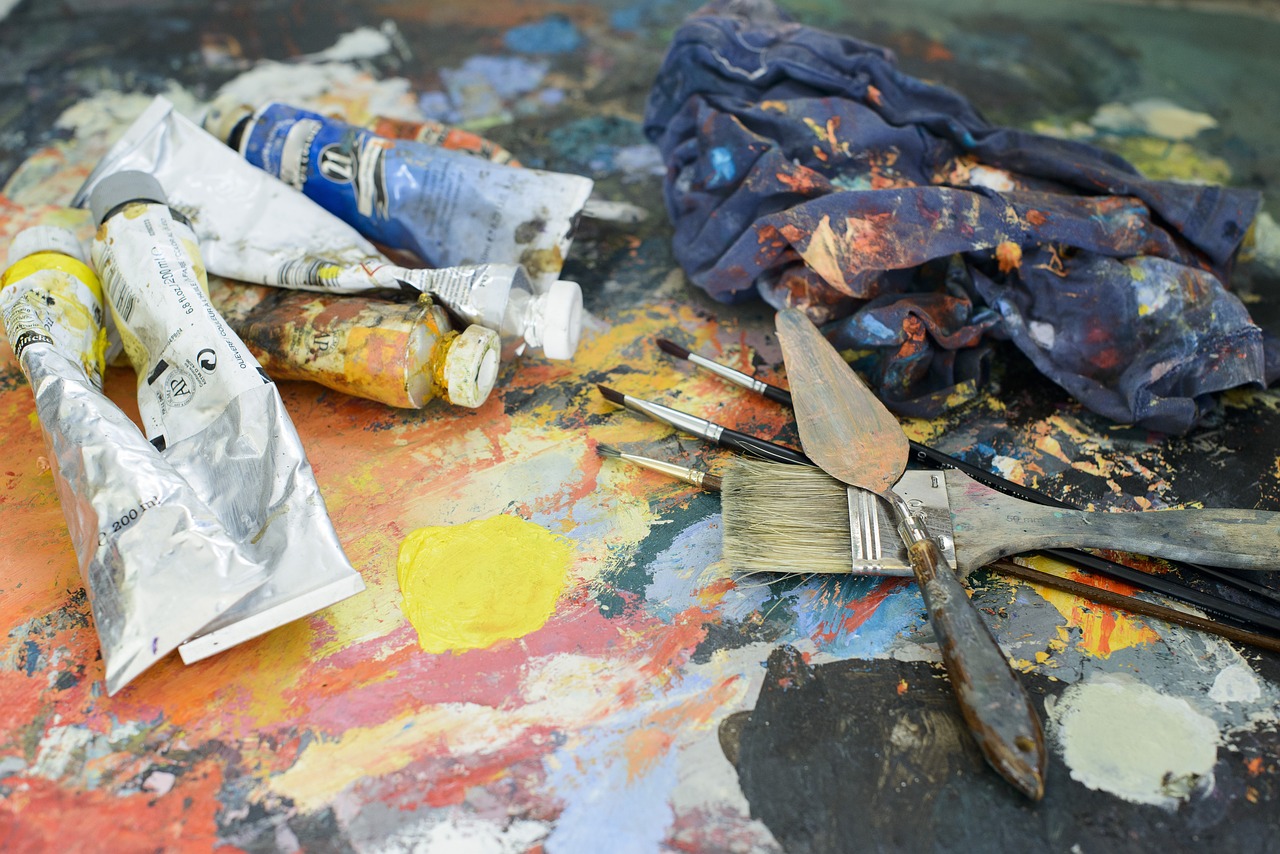
Canvas and Surface Selection
When it comes to painting like the Old Masters, the choice of canvas and surface is not just a trivial decision; it can dramatically influence the outcome of your artwork. The Old Masters understood this intimately, often selecting surfaces that complemented their techniques and materials. While many modern artists might opt for readily available canvases, delving into the history of surface selection can provide you with a richer understanding of how to achieve depth and texture in your paintings.
Traditionally, the Old Masters favored a variety of surfaces, including wooden panels, linen, and cotton canvases. Each of these materials offers unique properties that can enhance your painting experience. For instance, wooden panels, often used by artists like Leonardo da Vinci and Jan van Eyck, provide a smooth, rigid surface that is excellent for detailed work and allows for the application of multiple layers of paint without warping. On the other hand, linen canvases are renowned for their durability and ability to hold paint beautifully, making them a popular choice among artists like Rembrandt and Vermeer.
When selecting your canvas, consider the following factors:
- Texture: The texture of your canvas can affect how paint adheres and how colors appear. A fine texture is ideal for detailed work, while a rough texture can create interesting effects.
- Weight: Heavier canvases are more durable and can support multiple layers of paint, whereas lighter canvases may be more suitable for quick studies.
- Preparation: Many Old Masters would prime their canvases with gesso to create a smooth surface, which not only protected the canvas but also enhanced the vibrancy of the colors.
Moreover, the choice of surface can also extend to unconventional materials. Some artists experimented with paper, cardboard, or even metal surfaces to achieve unique effects. By exploring these options, you can inject a modern twist into your work while still paying homage to the techniques of the Old Masters.
Ultimately, the selection of canvas and surface is a deeply personal decision that can impact your artistic expression. As you embark on your journey to paint like the Old Masters, take the time to experiment with different surfaces to find what resonates with you. The right canvas can serve as a solid foundation for your creativity, allowing you to channel the spirit of the Old Masters while forging your own artistic path.
Q: What type of canvas is best for beginners?
A: For beginners, a medium-weight cotton canvas is often recommended. It’s affordable, readily available, and versatile for various painting techniques.
Q: Should I always use gesso on my canvas?
A: While it’s not mandatory, using gesso can significantly improve the paint's adhesion and vibrancy. It’s a good practice, especially when working with oil paints.
Q: Can I use acrylic paints on a wooden panel?
A: Absolutely! Acrylic paints work well on wooden panels, but ensure that the surface is properly primed to prevent the paint from soaking into the wood.
Q: How do I know if my canvas is of good quality?
A: Look for canvases that are tightly woven and free from blemishes. High-quality canvases will also have a sturdy frame and be pre-stretched to avoid warping.
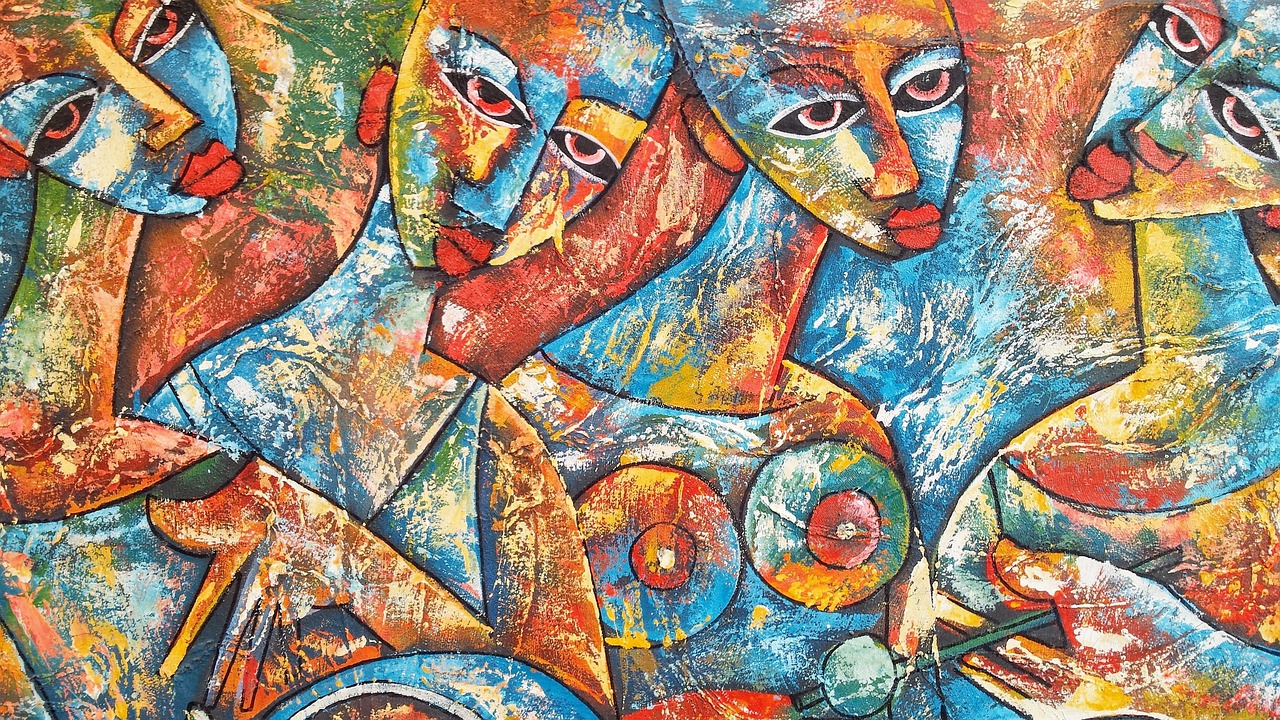
Techniques of the Old Masters
The Old Masters were not just artists; they were alchemists of light, color, and form, weaving their magic onto canvas in ways that continue to captivate audiences today. One of the most striking aspects of their artistry is their mastery of various techniques that brought depth, emotion, and realism to their work. Techniques such as glazing and chiaroscuro stand out as fundamental pillars of their craft. Glazing, for instance, involves applying thin, transparent layers of paint over a dried layer, creating luminous effects and depth that are simply unattainable with a single coat of paint. This method allows the artist to build up colors gradually, resulting in a rich, vibrant finish that can transform a painting from flat to stunningly dynamic.
Chiaroscuro, on the other hand, is the dramatic use of light and shadow to create a three-dimensional effect. Think of it as the artist’s way of sculpting with paint. By manipulating light and dark, the Old Masters could guide the viewer’s eye to focal points and evoke a sense of mood and atmosphere. For example, Caravaggio is renowned for his intense chiaroscuro, which not only adds depth but also enhances the emotional impact of his subjects. This technique can be likened to a spotlight on a stage, illuminating the main character while leaving the background in shadow, creating a powerful visual narrative.
Another fascinating technique employed by these masters is sfumato, a method perfected by Leonardo da Vinci. Sfumato involves the delicate blending of colors and tones to create soft transitions, eliminating harsh lines. This technique can evoke an ethereal quality, as seen in the enigmatic smile of the Mona Lisa. It’s like watching a dream unfold, where forms and shapes gently dissolve into one another, creating an almost mystical effect.
For contemporary artists looking to emulate these techniques, understanding the underlying principles is crucial. Here are some tips to consider:
- Experiment with Glazing: Start with a simple underpainting and gradually build layers using transparent colors. This will help you understand how light interacts with color.
- Practice Chiaroscuro: Set up a still life with a strong light source and practice painting the interplay of light and shadow. This will enhance your ability to create depth.
- Master Sfumato: Work on blending colors seamlessly. Use a soft brush and practice creating smooth transitions between tones.
Incorporating these techniques into your own work can seem daunting, but remember that the Old Masters themselves spent years honing their skills. It’s all about patience and practice. As you experiment with these methods, don’t be afraid to make mistakes; after all, every great artist has a few failed attempts in their journey. Embrace the process, and soon enough, you’ll find your own unique voice while paying homage to the timeless techniques of the Old Masters.
Q: What is glazing in painting?
A: Glazing is a technique where transparent layers of paint are applied over a dried underpainting to create depth and richness in color.
Q: How does chiaroscuro enhance a painting?
A: Chiaroscuro uses strong contrasts between light and dark to create a three-dimensional effect, guiding the viewer’s eye and adding emotional depth.
Q: Can I use modern materials to practice these techniques?
A: Absolutely! While traditional materials are preferred by some, many modern paints and tools can effectively mimic the results of Old Masters techniques.
Q: How long does it take to master these techniques?
A: Mastery takes time and practice. Be patient with yourself, and focus on consistent practice to gradually improve your skills.

Color Theory and Mixing
Color theory is not just a set of rules; it's a vibrant language that speaks to the heart of every painting. For the Old Masters, understanding color was fundamental to their artistry. They didn’t just slap colors on a canvas; they orchestrated a symphony of hues that danced together to evoke emotions and tell stories. Imagine walking into a gallery and feeling the warmth of a sunset or the chill of a winter's day—this is the magic of color theory at work.
At its core, color theory involves understanding the relationships between colors. The Old Masters were adept at using the color wheel, which categorizes colors into primary, secondary, and tertiary hues. By mastering these relationships, they could create stunning contrasts and harmonious blends. For instance, they knew that pairing complementary colors—those opposite each other on the color wheel—could create a striking visual impact. Think of how Vincent van Gogh used vibrant oranges and blues to create an electrifying energy in his works.
Mixing colors is another crucial aspect of an artist's toolkit. The Old Masters often utilized a limited palette, which may sound counterintuitive, but it allowed them to create depth and cohesion in their paintings. By mixing just a few colors, they could achieve a wide range of tones and shades. For example, a simple combination of ultramarine blue, cadmium red, and yellow ochre could yield a stunning array of skin tones, landscapes, and atmospheric effects. This technique not only simplified their process but also enriched their work with a sense of unity.
To illustrate this concept, let’s take a closer look at how the Old Masters approached color mixing. Here’s a simple table that outlines some common colors and their mixing results:
| Base Color 1 | Base Color 2 | Resulting Color |
|---|---|---|
| Cadmium Red | Ultramarine Blue | Purple |
| Cadmium Yellow | Ultramarine Blue | Green |
| Burnt Umber | Cadmium Yellow | Olive Green |
Understanding color temperature is another essential element of color theory. The Old Masters skillfully manipulated warm and cool colors to create mood and depth in their paintings. Warm colors like reds, oranges, and yellows tend to evoke feelings of warmth and excitement, while cool colors like blues and greens can create a sense of calm and serenity. Think about how a sunset feels compared to a tranquil lake—each scene is painted with a different emotional palette.
Incorporating these principles into your own artwork can be transformative. Start by experimenting with a limited palette and focus on mixing colors to achieve the desired effects. As you paint, pay attention to how different color combinations make you feel and how they affect the overall composition. Remember, every stroke is an opportunity to tell a story through color, much like the Old Masters did centuries ago.
- What is color theory? Color theory is a framework that explains how colors interact, complement, and contrast with one another.
- Why did Old Masters use a limited palette? A limited palette allowed them to create cohesive and harmonious artworks by mixing a few colors to achieve a wide range of tones.
- How can I apply color theory to my painting? Start by understanding the color wheel, experimenting with mixing colors, and observing how warm and cool colors influence the mood of your artwork.
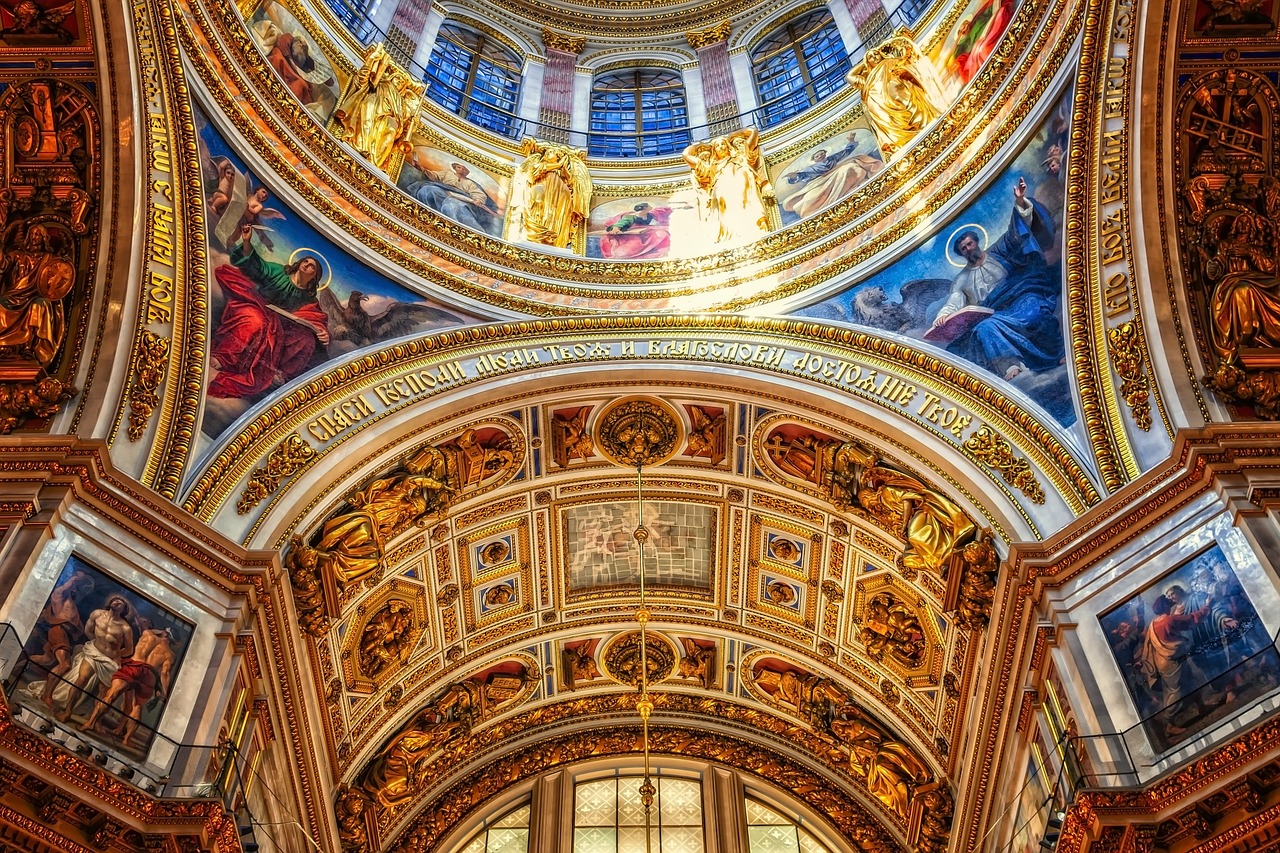
Creating a Limited Palette
When it comes to painting, less can truly be more. The Old Masters understood this principle well, often opting for a limited palette to achieve stunning depth and harmony in their works. By selecting just a few colors, they could create a wide range of tones and shades, allowing their paintings to resonate with a sense of unity and balance. But how exactly does this work? Let's dive into the fascinating world of color mixing and discover the magic behind a limited palette.
Imagine you're standing in front of a beautiful sunset. The vibrant oranges, deep reds, and soft purples blend seamlessly into one another, creating a breathtaking scene that captivates your senses. This is the kind of effect that can be achieved with a limited palette. By focusing on a handful of colors, you can create a cohesive artwork that feels intentional and well thought out. The Old Masters often used a combination of primary colors along with a few earth tones to create their masterpieces. For instance, a classic palette might include:
- Cadmium Red
- Ultramarine Blue
- Cadmium Yellow
- Burnt Umber
- Titanium White
With these five colors, the Old Masters could mix a myriad of hues, allowing for both vibrancy and subtlety. The key is to understand how to mix these colors effectively. For example, combining Cadmium Red and Ultramarine Blue creates a rich purple, while mixing Cadmium Yellow with Burnt Umber yields a warm, earthy tone. This approach not only simplifies the painting process but also helps in achieving a harmonious color scheme.
Another advantage of using a limited palette is the emotional impact it can have on the viewer. The fewer colors you use, the stronger the connection between them becomes. Think of it like a well-composed piece of music; when there are fewer instruments playing, the melody stands out more clearly. Similarly, a limited palette can enhance the overall mood of your painting, creating a more profound experience for the viewer.
However, it's important to remember that a limited palette doesn't mean you have to sacrifice variety. By experimenting with different mixing techniques, such as glazing or layering, you can create depth and texture while still adhering to your selected colors. The Old Masters often employed these methods to add complexity to their work, allowing each layer to interact with the others in a dynamic way. When you paint, consider using transparent glazes over opaque layers to achieve luminous effects that can bring your artwork to life.
In conclusion, creating a limited palette is not just about reducing the number of colors you use; it's about enhancing your artistic expression and achieving a sense of unity in your work. By following in the footsteps of the Old Masters, you can discover the beauty of simplicity and the power it holds in capturing the essence of your subject. So grab your brushes, select your colors wisely, and let the magic unfold on your canvas!
Q: What is a limited palette?
A: A limited palette refers to using a small selection of colors to create a painting. This technique helps achieve harmony and depth in the artwork.
Q: How many colors should I include in my limited palette?
A: Typically, a limited palette can consist of 3 to 5 colors. This allows for a wide range of mixing while maintaining cohesiveness.
Q: Can I still create vibrant paintings with a limited palette?
A: Absolutely! A limited palette can lead to vibrant compositions by focusing on mixing colors effectively and using techniques like glazing.
Q: What are some common colors used in a limited palette?
A: Common colors include primary colors (red, blue, yellow) and a few earth tones, such as burnt umber or yellow ochre.
Q: How do I mix colors effectively?
A: Start by experimenting with small amounts of paint. Mix colors gradually, observing how they interact, and keep track of your mixtures to replicate successful results.
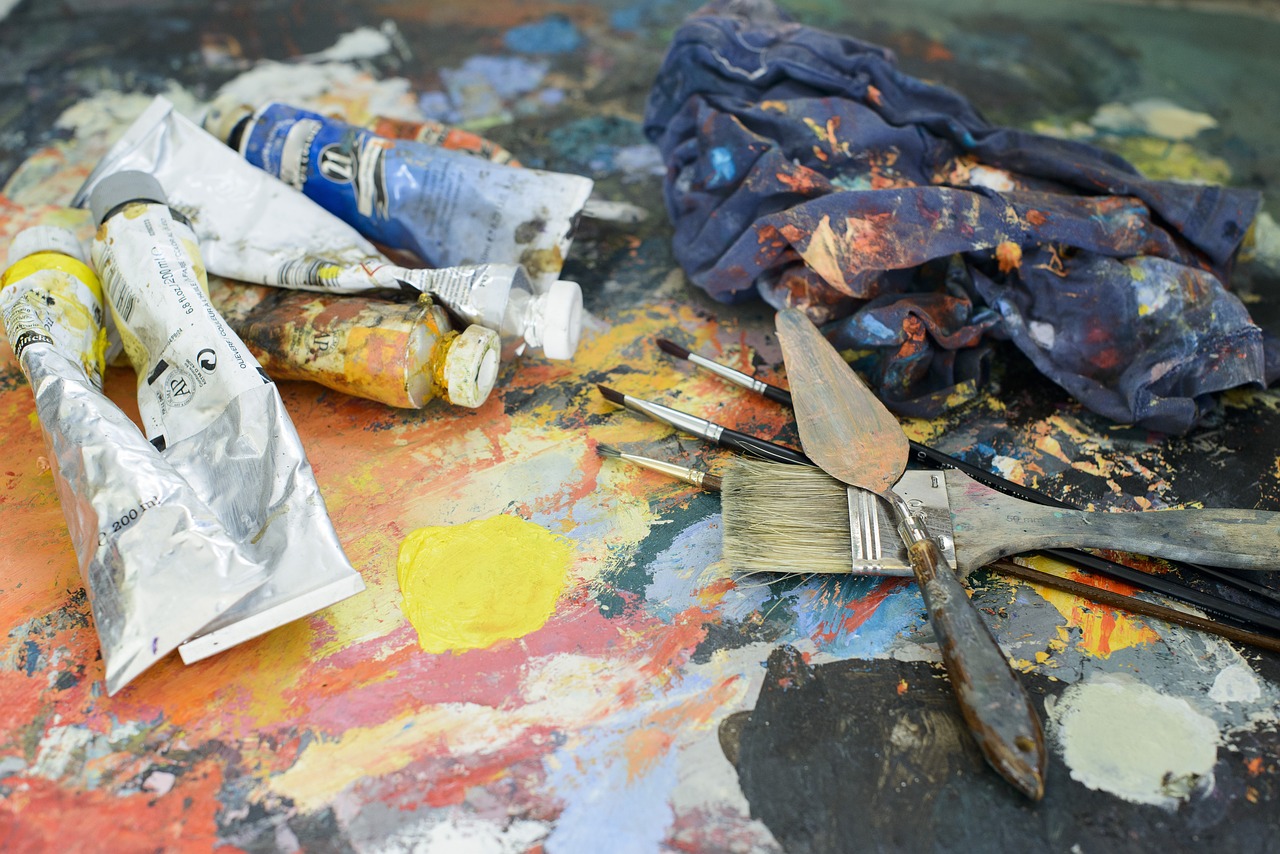
Understanding Color Temperature
Color temperature is a fundamental concept in painting that can dramatically influence the mood and perception of a piece. It refers to the warmth or coolness of a color, which can evoke different feelings and atmospheres in the viewer. The Old Masters were masters at manipulating color temperature to create depth, highlight focal points, and guide the viewer's emotional response to their work. Just think of how a warm, glowing sunset can evoke feelings of warmth and comfort, while a cool, blue-toned scene might create a sense of calm or melancholy.
In the context of painting, colors are typically categorized into two main groups: warm colors and cool colors. Warm colors, such as reds, oranges, and yellows, tend to advance in a composition, making them appear closer to the viewer. On the other hand, cool colors like blues, greens, and purples recede, giving the illusion of depth and space. The Old Masters often used these principles to create a sense of three-dimensionality in their works. For instance, in a portrait, warm tones might be used on the face to draw attention, while cooler tones could be employed in the background to add depth and dimension.
To better understand how color temperature works, let’s take a closer look at how the Old Masters applied it in their paintings:
| Color Temperature | Emotional Impact | Example in Old Masters' Work |
|---|---|---|
| Warm Colors | Energy, Passion, Warmth | Caravaggio's "The Calling of Saint Matthew" |
| Cool Colors | Calm, Serenity, Distance | Vermeer’s "Girl with a Pearl Earring" |
By skillfully combining warm and cool colors, the Old Masters created dynamic contrasts in their compositions. This not only enhanced the visual appeal but also added layers of meaning to their works. For example, a warm light source can create a focal point in a painting, drawing the viewer's eye and creating an emotional connection with the subject. In contrast, cooler colors can be used to suggest shadows or background elements, providing a sense of balance and harmony.
To effectively utilize color temperature in your own artwork, consider the following tips:
- Experiment with Color Mixing: Try mixing warm colors with cool colors to see how they interact. This can help you understand the impact of temperature on your palette.
- Observe Natural Light: Pay attention to how light affects color temperature throughout the day. The golden hour, for instance, casts a warm glow that can transform a scene.
- Use Color Temperature for Composition: Think about how you can use warm and cool colors to guide the viewer's eye through your painting.
In conclusion, understanding color temperature is essential for any artist looking to emulate the techniques of the Old Masters. By mastering this concept, you can create more engaging and emotionally resonant artworks that captivate your audience. So, grab your brushes, explore the world of color, and let your creativity flow!
- What is color temperature? Color temperature refers to the warmth or coolness of a color, influencing the mood and depth of a painting.
- How can I apply color temperature in my artwork? You can apply color temperature by mixing warm and cool colors, observing natural light, and using temperature to guide the viewer's eye.
- Why is color temperature important? It is important because it helps create emotional connections, depth, and balance in your artwork, enhancing its overall impact.
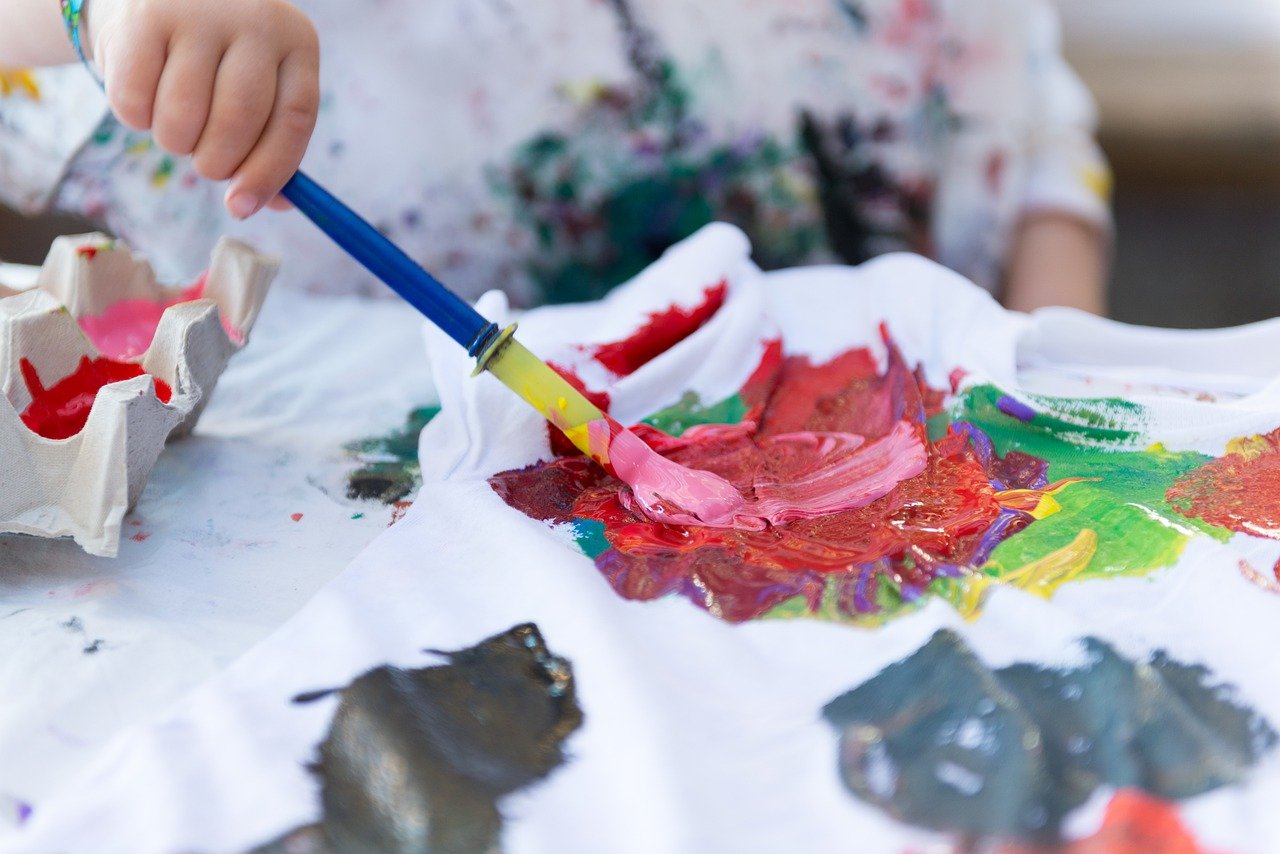
Composition and Design Principles
When it comes to painting, composition is like the backbone of your artwork—it holds everything together and gives it structure. The Old Masters were masters not just of technique, but also of design principles that made their paintings timeless. They understood that a well-composed piece could evoke emotions and draw the viewer in, much like a captivating story. So, how did they achieve this? Let’s dive into some of the fundamental principles that can elevate your artwork to new heights.
One of the most crucial aspects of composition is the Rule of Thirds. This classic technique divides your canvas into a grid of nine equal parts, creating four intersection points. The idea is to place your focal points along these lines or at the intersections, leading to a more balanced and engaging composition. Imagine your painting as a delicious dish—arranging the elements thoughtfully can turn a simple meal into a feast for the eyes!
Another essential principle is the establishment of focal points. Focal points are the areas in your painting that naturally draw the viewer's attention. The Old Masters used various techniques to create these focal points, such as contrasting colors, sharper details, or strategic placement within the composition. For instance, in Caravaggio's works, the dramatic use of light and shadow directs our gaze to the main subject, creating an intense emotional impact. Think of it as lighting up the stage for a performance—the spotlight needs to shine on the star!
Furthermore, the use of leading lines can guide the viewer's eye throughout the painting. These lines can be literal, such as a path or a river, or they can be implied through the arrangement of elements. For example, in many of Rembrandt's portraits, the way the subjects are positioned often leads the eye toward their faces, emphasizing the emotion and story behind each character. It's like creating a roadmap for your audience to follow, ensuring they don’t miss the important stops along the way.
To illustrate these principles, let’s take a look at a simple table that summarizes some key composition techniques used by the Old Masters:
| Technique | Description | Example |
|---|---|---|
| Rule of Thirds | Dividing the canvas into thirds to create balance. | Many landscapes by Claude Monet. |
| Focal Points | Areas that attract attention through contrast or detail. | Light and shadow in Caravaggio's "The Calling of St. Matthew." |
| Leading Lines | Lines that guide the viewer's eye through the painting. | The winding paths in Vincent van Gogh's landscapes. |
In addition to these techniques, understanding balance is vital. Balance can be achieved through symmetrical or asymmetrical arrangements of elements. Symmetry gives a sense of stability and order, while asymmetry can create tension and dynamism. Consider how the weight of colors and shapes can affect the overall feel of your painting. It’s like a seesaw; if one side is too heavy, it will tip the balance and lose harmony.
Lastly, don’t forget about negative space. This refers to the area around and between the subjects of your painting. Utilizing negative space effectively can enhance your composition, allowing your main subjects to breathe and stand out. Think of it as the silence in a beautiful melody—it adds depth and resonance to the overall piece.
- What is the Rule of Thirds? The Rule of Thirds is a composition technique that divides your canvas into a grid, helping you place focal points for a balanced look.
- How can I create focal points in my artwork? Use contrasting colors, sharp details, or strategic placement to draw attention to specific areas of your painting.
- What is negative space in painting? Negative space refers to the area around your subjects, which can enhance the overall composition and give your artwork more impact.
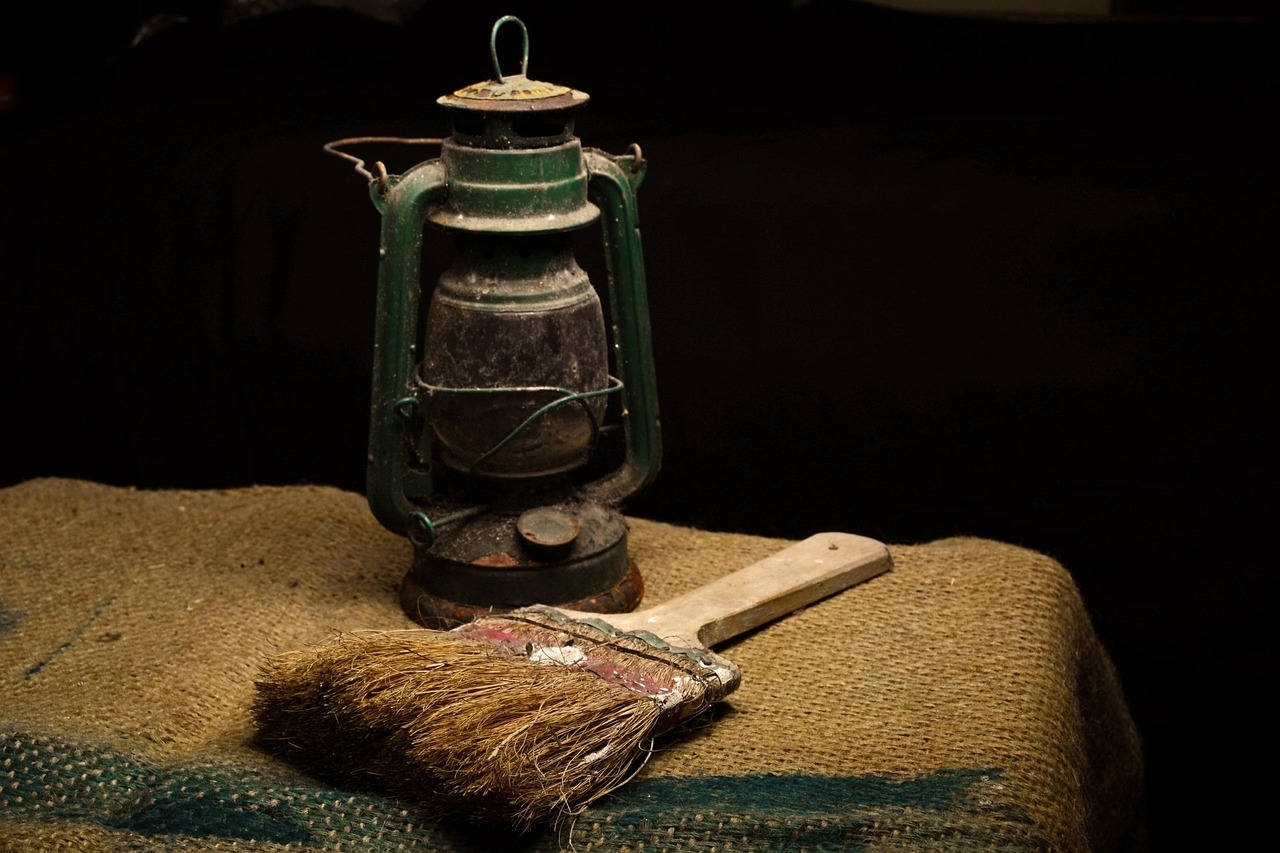
Rule of Thirds in Painting
The Rule of Thirds is a fundamental principle in visual composition that has been employed by artists for centuries, including the Old Masters. Imagine dividing your canvas into nine equal parts by two equally spaced horizontal lines and two equally spaced vertical lines. This simple grid creates a framework that helps artists position their subjects in a way that is visually appealing and engaging. By placing focal points along these lines or at their intersections, you can create a sense of balance and harmony in your artwork that draws the viewer's eye naturally.
Why does this technique work so well? It taps into the way our brains naturally process images. When you place important elements off-center, it creates a sense of dynamism and interest. Instead of a static composition that feels forced, a painting that adheres to the Rule of Thirds feels more organic and alive. Think of it like a well-composed photograph; the most captivating images often follow this rule, leading to compositions that resonate with viewers on a deeper level.
Old Masters like Caravaggio and Rembrandt expertly utilized this technique to guide the viewer’s gaze throughout their paintings. For instance, Caravaggio’s use of dramatic lighting and strategic placement of figures often aligns with the Rule of Thirds, creating tension and focus. Similarly, Rembrandt’s portraits frequently feature subjects positioned off-center, allowing for a more intimate connection between the viewer and the subject.
To effectively apply the Rule of Thirds in your own painting, consider the following tips:
- Sketch a grid: Before you start painting, lightly sketch a grid on your canvas to help you visualize where to place your focal points.
- Experiment with placement: Try positioning your main subject at one of the intersections or along the lines to see how it changes the overall feel of your artwork.
- Balance elements: Ensure that other elements in your painting complement the focal point without overwhelming it. This balance is key to maintaining viewer interest.
In conclusion, mastering the Rule of Thirds can significantly enhance your painting skills and create more compelling compositions. By understanding and applying this principle, you not only honor the techniques of the Old Masters but also develop your unique artistic voice. So next time you sit down to paint, remember to visualize that grid—your masterpieces will thank you!
Q1: What is the Rule of Thirds?
The Rule of Thirds is a compositional guideline that suggests dividing an image into nine equal parts using two horizontal and two vertical lines. Important elements should be placed along these lines or their intersections for a balanced composition.
Q2: How can I apply the Rule of Thirds in my paintings?
You can apply the Rule of Thirds by sketching a grid on your canvas and positioning your main subjects at the intersections or along the lines. This helps create a more dynamic and engaging composition.
Q3: Do all artists use the Rule of Thirds?
While many artists, including the Old Masters, have utilized the Rule of Thirds, it is not a strict rule. Artists can choose to break this guideline to achieve specific effects or to convey their unique style.
Q4: Can the Rule of Thirds be applied to other art forms?
Absolutely! The Rule of Thirds is widely used in photography, graphic design, and even film. It is a versatile principle that enhances visual storytelling across various mediums.

Creating Focal Points
Creating focal points in your artwork is akin to crafting a captivating story; it draws the viewer in and keeps their eyes moving across the canvas. Just as a good book has a plot twist that captures your attention, an effective focal point in painting serves as the centerpiece that commands interest. Old Masters mastered this art, using various techniques to guide the viewer's gaze towards the most important elements of their compositions. But how exactly did they achieve this? Let's dive into the methods that can elevate your own paintings.
One of the primary techniques employed by the Old Masters is the use of contrasting colors and values. By placing a bright or dark element against a muted background, they created a natural spotlight effect that makes the focal point pop. For instance, think of how Rembrandt used light and shadow to highlight the faces in his portraits, making them the undeniable center of attention. You can achieve a similar effect by selecting colors that contrast sharply with the surrounding hues. This not only enhances the focal point but also adds depth and dimension to your work.
Another effective method is the use of leading lines. Imagine a winding road that beckons you to explore further; this is the kind of visual pathway you want to create in your artwork. Old Masters often used architectural elements, such as columns or pathways, to draw the viewer's eye towards the focal point. You can incorporate leading lines in your compositions by strategically placing elements that guide the viewer’s gaze. For example, a diagonal line created by a tree branch can lead directly to your subject, creating a sense of movement and engagement.
Additionally, the placement of the focal point within the composition plays a crucial role. The Rule of Thirds is a classic guideline that suggests dividing your canvas into a grid of nine equal parts. By positioning your focal point along these lines or at their intersections, you can create a more balanced and dynamic composition. This technique is not just a formula; it’s a way to create visual tension and interest that resonates with the viewer. Take a moment to visualize how your painting would change if you simply shifted the focal point slightly to one side. The difference can be striking!
Moreover, consider the emotional weight of your focal point. What story do you want to tell? Old Masters were masters of narrative, often choosing subjects that evoked strong emotions. Whether it's the serene expression of a saint or the intense gaze of a nobleman, the emotional content can significantly impact how the viewer interacts with the artwork. Think about how you can imbue your focal point with similar emotional depth. This could be achieved through facial expressions, body language, or even the surrounding elements that tell a story.
In summary, creating focal points is a multifaceted approach that combines color, placement, leading lines, and emotional resonance. By studying the techniques of the Old Masters, you can develop your own style while ensuring that your artwork captivates and engages the viewer. Remember, the goal is not just to create a beautiful painting, but to create an experience that resonates long after the viewer has stepped away.
- What is a focal point in painting? A focal point is the area in a painting that attracts the viewer's attention first. It is often the most important part of the artwork.
- How can I create a focal point in my artwork? You can create a focal point by using contrasting colors, leading lines, strategic placement, and emotional content.
- Why is the focal point important? The focal point is important because it helps guide the viewer’s gaze and creates a visual hierarchy within the artwork.
- Can I have multiple focal points? Yes, you can have multiple focal points, but it's essential to ensure they complement each other and do not compete for attention.
Frequently Asked Questions
- What materials did the Old Masters use for their paintings?
The Old Masters primarily used oil paints, which allowed for rich color and intricate detail. They also favored high-quality brushes made from natural hair and various types of canvas and wood panels as surfaces for their artwork. These materials contributed significantly to the longevity and vibrancy of their paintings.
- How can I achieve the glazing technique used by the Old Masters?
To master glazing, start by applying a thin layer of transparent paint over a dry base layer. Use a slow-drying medium, such as linseed oil, to allow for blending and layering. Remember, patience is key—building up layers gradually will create that luminous depth characteristic of Old Master paintings.
- What is the importance of color theory in painting like the Old Masters?
Color theory is crucial as it guides how colors interact with each other. The Old Masters utilized color mixing and temperature to evoke emotions and create depth. By understanding warm and cool colors, you can manipulate the mood of your artwork and achieve a more dynamic composition.
- How do I select the right brushes for my painting?
Choosing the right brushes is essential for achieving various effects. Look for brushes with different shapes and sizes, such as flat, round, and filbert. The Old Masters often used softer brushes for blending and harder brushes for fine details. Experimenting with different types will help you find what works best for your style.
- What are some composition tips inspired by the Old Masters?
One effective tip is to apply the Rule of Thirds. Divide your canvas into a grid and place focal points along the lines or intersections. This creates balance and draws the viewer's eye. Also, think about leading lines and how they can guide the viewer through your painting.
- Can I use a limited palette like the Old Masters?
Absolutely! Using a limited palette can lead to a more harmonious artwork. The Old Masters often used just a few colors to create a wide range of tones. Start with primary colors and mix them to achieve the desired shades, focusing on creating depth and richness without overwhelming your composition.
- What is chiaroscuro, and how can I use it in my paintings?
Chiaroscuro refers to the strong contrast between light and dark that creates a dramatic effect. To use this technique, identify your light source and apply lighter tones where the light hits, while deepening shadows in areas that recede. This will add dimension and drama to your artwork, reminiscent of the Old Masters.



















